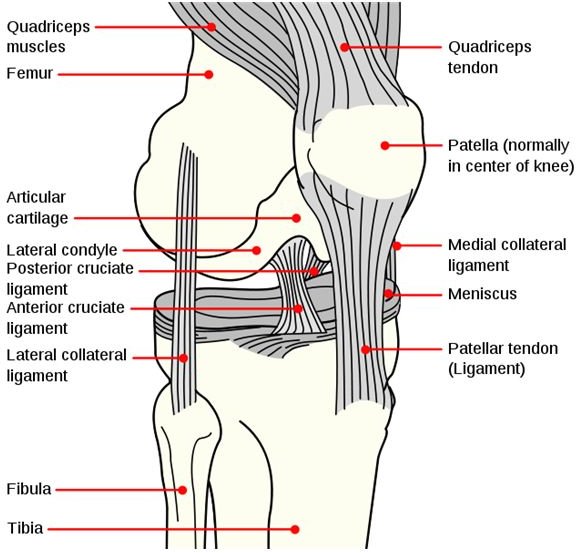Hyperextension of the Knee
Knee joints can become too flexible and they are particularly vulnerable to being too flexible, too lax and hypermobile. Hyperextension of the knee can lead to this problem, which can result in knee injuries. Hyperextension can also lead to bad movement habits, misalignment, and arthritis.
How to Recognize a Hyperextended Knee
When a knee is too flexible the leg will look like it is curving back. Similar to how a pink flamingos’ knee joint works. When a person is standing their knee will appear to be forcing itself backwards. To recognize this during exercise, particularly stretching and yoga, it is important to wear tight fitting pants or shorts that fall at least two inches above the knee. Stand in front of a mirror, at least three feet away from it, and watch the knee during exercise.
Symptoms of Knee Hyperextension
There will be some immediate symptoms and some lingering symptoms. Immediately after the knee is hyperextended, a person may notice a “pop” followed by a feeling of the knee being misaligned. Pain can be felt on the sides and back of the knee. The knee can begin to swell within a few hours. The knee may be unstable allowing the person to walk on it, but walking on it will often cause pain.
Some lingering symptoms include continued swelling, knee misalignment, pain (can be severe), difficulty putting weight on the affected knee, the knee may “lock up”, and difficulty straightening the leg. Once a knee has been hyperextended, it is more vulnerable to becoming hyperextended again.
Correcting the Problem
Many people feel that they should avoid exercising a hyperextended knee. While certain exercises can aggravate the issue or lead to injury there are some exercises that can help to correct the problem. Simple squats, bent-knee calf stretches, and certain yoga poses, such as the Garland pose, can be very beneficial in correcting this problem. These exercises should be done regularly for the most benefit.
People should start small and work themselves up to three sets of fifteen (of at least two of these exercises), two to four days a week. It is important to not overdo it, though, so these exercises should not be done every single day. The knee does need to rest.
Protecting the Knees
Strengthening the quadriceps is one of these best ways to protect the knees and prevent hyperextension of the knee. The quadriceps are located on the front of the thigh and can be strengthened through a variety of exercises, such as squats and lunges. Squats and lunges should be done regularly for optimal benefit. Gradually working up to three sets of fifteen, two to four days a week is ideal.
Resources
Gudmestad, J. (2010). The Hyperextended Knee. Retrieved on February 22, 2010 from Yoga Journal: https://www.yogajournal.com/practice/997
Image Credits
Knee Diagram: Mysid – Wikimedia Commons
